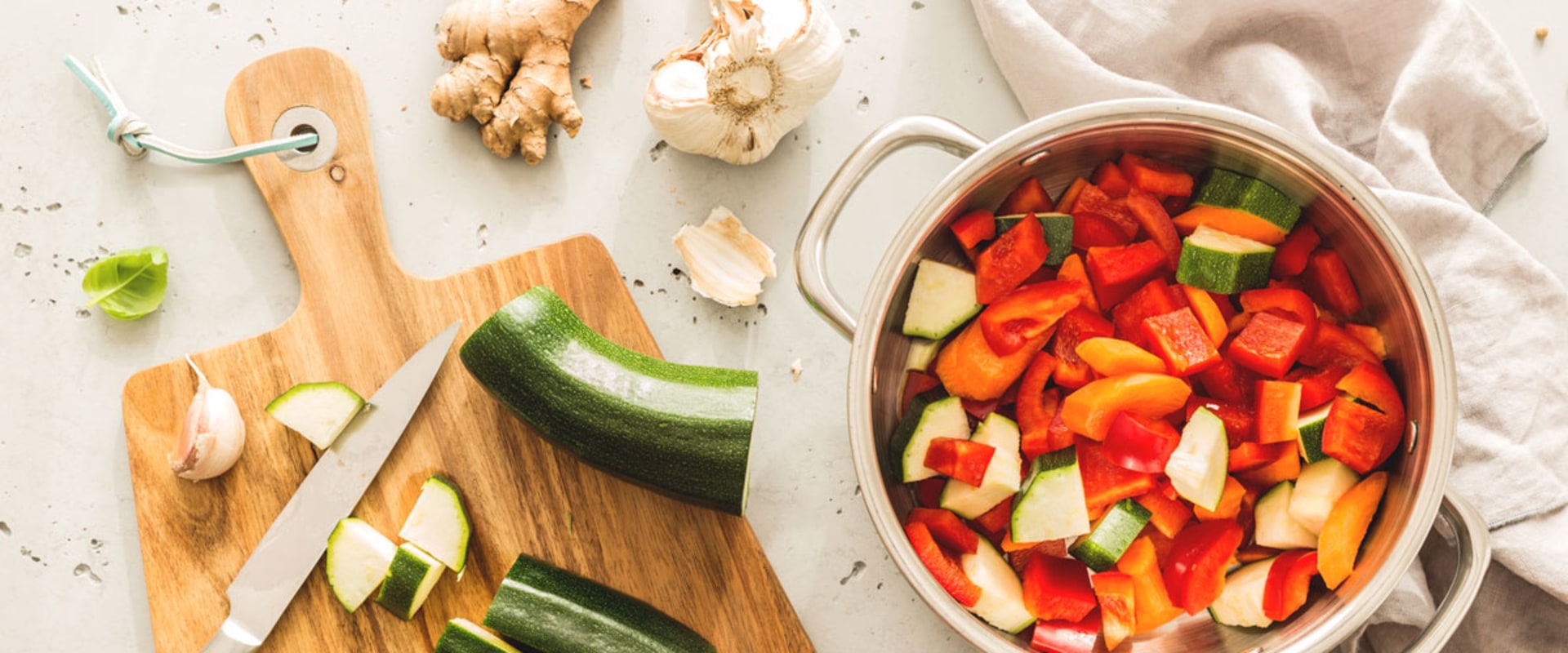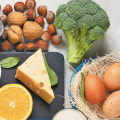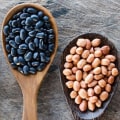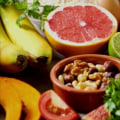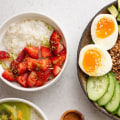Making the switch to a plant-based diet can be an intimidating and overwhelming process, but it doesn't have to be. With the right tips and tricks, you can make the transition to a plant-based diet easier and more enjoyable. In this article, we'll provide you with a comprehensive guide on transitioning to a plant-based diet, including tips on how to stay motivated, how to make sure you get all the essential nutrients you need, and how to make the most of your plant-based lifestyle.
Learn About Nutrition Labels
Nutrition labels are essential when shopping for plant-based foods. Pay close attention to the ingredients list to make sure the food is vegan-friendly and free from animal products.When reading nutrition labels, make sure to look for saturated and trans fats, added sugars, sodium, and cholesterol levels. Choose foods that are low in saturated fat, added sugar, and sodium, and have no cholesterol. Aim to get most of your calories from complex carbohydrates and fiber-rich sources such as fruits, vegetables, whole grains, legumes, nuts, and seeds. Additionally, some plant-based foods may be highly processed and contain artificial ingredients or additives.
Check the ingredients list to make sure there are no animal-derived ingredients or additives listed. If you're not sure if an ingredient is vegan-friendly or not, do a quick online search to find out. Finally, pay attention to serving sizes on nutrition labels. This will help you control how much you eat and ensure that you're getting the right amount of nutrients in each meal.
Stock Up on Staples
Stock Up on StaplesHaving a well-stocked pantry is essential when transitioning to a plant-based diet. Make sure to stock up on staples like grains, legumes, nuts, seeds, and nut butters so you always have something on hand for quick meals. Grains are an excellent source of fiber, protein, and B vitamins, and can be used as the base of many dishes. Some examples include quinoa, brown rice, oats, and farro.Legumes are a great source of protein and fiber and can be used in soups, stews, salads, and more. Popular legumes include chickpeas, lentils, and black beans. Nuts and seeds provide essential vitamins and minerals and can be used in snacks or as toppings for salads and other dishes. Nut butters are also a great source of protein and healthy fats, and can be used to make sauces or as a spread on toast. Having these staples in your pantry will make it easier to plan meals and whip up delicious dishes quickly.
When shopping for plant-based staples, look for organic, non-GMO options whenever possible.
Meal Planning
Meal planning is key when transitioning to a plant-based diet. Taking some time each week to plan out your meals and make a grocery list of the ingredients you'll need can be a great way to ensure you have all the necessary ingredients to create delicious and nutritious plant-based meals. Creating a meal plan also helps you save time by eliminating the need to think about what to make each day. When creating your meal plan, be sure to include a variety of vegetables, grains, legumes, and fruits. It's also a good idea to incorporate healthy fats like nuts, seeds, and avocados into your meals.Include enough servings of each type of food so that you are getting the recommended daily allowance of nutrients. If you're looking for meal ideas, there are plenty of plant-based recipes available online. In addition to creating a meal plan, it's important to create a grocery list with all the ingredients you'll need. Having a grocery list can help you save time at the store and also ensure that you don't forget any essential ingredients. Be sure to check nutrition labels for hidden animal products before purchasing any packaged foods.
Start with Small Changes
Making the switch to a plant-based diet can be daunting, but it doesn't have to be! When transitioning to a plant-based diet, it's best to start small and make gradual changes.Try swapping out one animal product for a plant-based option at each meal and see how it goes. This way, you can gradually get used to the taste and texture of plant-based foods without feeling overwhelmed. You can also try adding more plant-based foods to your diet by replacing some of your favorite animal-based dishes with vegetarian or vegan alternatives. For example, if you love tacos, try making them with lentils instead of beef.
Or if you're a fan of pizza, try making a vegan version with mushrooms, spinach, and vegan cheese. Another great way to transition to a plant-based diet is to try out a variety of plant-based recipes. There are so many delicious plant-based dishes out there – from salads and soups to curries and stir-fries – so find some recipes that sound good to you and give them a try!Finally, don't forget to read nutrition labels when shopping for plant-based foods. Many packaged foods marketed as “plant-based” may contain added sugars, sodium, and unhealthy fats. So it's important to read labels and choose items that are minimally processed and contain mostly whole ingredients.
Find Delicious Recipes
One of the best ways to make the transition to a plant-based diet easier is to find delicious recipes that you enjoy.Try searching online or in cookbooks for vegan recipes that use ingredients you already have on hand. You can also look for plant-based meal ideas that use simple ingredients and require minimal preparation time. To get started, try looking for recipes in vegan cookbooks or websites like VegAnnie, Minimalist Baker, and Plant-Based on a Budget. There are also many great vegan recipe blogs, such as Vegan Richa and The Vegan 8, which offer easy-to-make meals that are both healthy and flavorful. Another great way to find vegan recipes is to search by ingredient. For example, if you have some lentils in your pantry, try searching “vegan lentil recipes” to find ideas for meals.
This will help you use up the food you already have while also making sure you’re getting a variety of plant-based dishes. Once you’ve found some recipes that sound delicious, it’s a good idea to check out the ingredients list. Make sure you understand what each ingredient is and how it will fit into your plant-based diet. This will help you learn more about plant-based nutrition and make sure you’re getting all the nutrients you need. Finally, don’t be afraid to experiment with new ingredients and flavors. Trying out new recipes can be a great way to discover what kind of food you like and make transitioning to a plant-based diet more exciting and enjoyable.
Don't Forget Snacks
Snacks are an important part of any diet, so make sure you have plenty of healthy plant-based snacks on hand for when hunger strikes.Nuts, seeds, and dried fruit are all great options for on-the-go snacking. Not only do these snacks provide a convenient and nutritious way to stay satiated between meals, but they also offer a variety of health benefits. Nuts and seeds, for example, are packed with essential fatty acids, vitamins, minerals, and antioxidants. Dried fruit is an excellent source of fiber, vitamins, and minerals. When choosing snacks, make sure to look for those that are minimally processed and free of added sugar or preservatives.
If you're looking for something a bit more substantial, consider making your own trail mix with nuts, seeds, and dried fruit. You can also opt for homemade energy bars or energy balls made with rolled oats, nut butter, and dried fruit. If you're in need of a quick and easy snack, try roasted chickpeas or edamame. Both are high in protein and fiber and can be seasoned with herbs, spices, or nutritional yeast for a flavor boost. You can also make your own hummus using canned chickpeas and seasonings like garlic and lemon juice. And don't forget about fruits! Fruits are an excellent source of fiber and essential vitamins and minerals.
Apples, oranges, bananas, and grapes are all great choices for snacking on the go. Or if you're looking for something a bit more indulgent, try dark chocolate-covered strawberries or homemade fruit leather. Finally, don't forget about plant-based protein bars. These bars provide a convenient source of plant-based protein and can be enjoyed as a snack or meal replacement. Just be sure to check the label to make sure the bar is made with whole food ingredients.
Don't Forget Snacks
Snacks are an important part of any diet, so make sure you have plenty of healthy plant-based snacks on hand for when hunger strikes.Protein-rich nuts such as almonds, walnuts, and peanuts provide a good source of energy and can be enjoyed as a snack or added to a meal. Seeds such as pumpkin, sunflower, and flax are another great source of protein, vitamins, and minerals that can easily be added to meals or enjoyed as a snack. Dried fruit such as apricots, raisins, and dates are also a great source of fiber and vitamins, and can be enjoyed as a quick and easy snack. When transitioning to a plant-based diet, it's important to make sure you're getting enough healthy snacks to keep you energized throughout the day.
Planning ahead is key to ensuring you have enough nutritious snacks on hand at all times. Consider making larger batches of your favorite plant-based snacks so that you can always have some ready in the fridge or pantry for when hunger strikes.
Don't Forget Snacks
Snacks are an important part of any diet, so make sure you have plenty of healthy plant-based snacks on hand for when hunger strikes. Try to keep a variety of these items stocked in your pantry, as well as some other easy-to-grab snacks like roasted chickpeas, protein bars, or veggie chips. You can also make your own healthy snacks using ingredients like oats, nuts, and dried fruit.Keep in mind that snacks can help you get in extra nutrients throughout the day. Nuts are a great source of plant-based protein and healthy fats, while seeds provide fibre and minerals. Dried fruit is a great source of natural sweetness and fibre, and it’s also a great way to get in some extra vitamins and minerals. It’s important to remember that snacking should be done in moderation—it’s not meant to replace meals. A few healthy snacks throughout the day can help keep your energy levels up and prevent you from overeating at mealtime.
Transitioning to a plant-based diet can be intimidating at first, but with some planning and preparation, it can be easy and enjoyable! Start by making small changes gradually, get familiar with nutrition labels, stock up on staples, find delicious recipes and don't forget snacks! With these tips and tricks in mind, you'll be well on your way to successfully transitioning to a plant-based diet.
